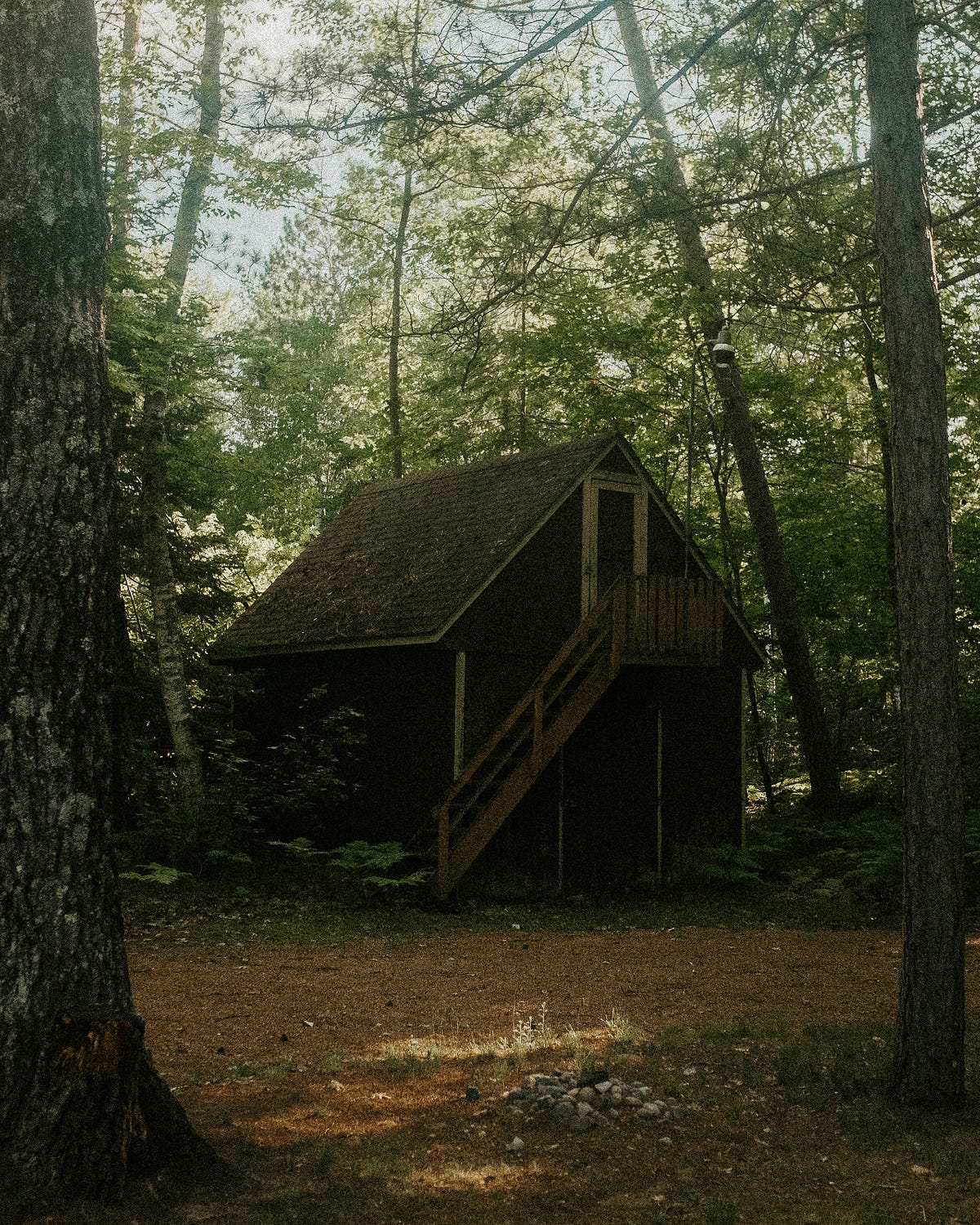Good Boy turns man’s best friend into horror’s most heartbreaking witness.
There’s not much that gets me more excited in a movie than a good animal performance. The power of film to emotionalize an animal in the context of a great story is one of the many wonderful things the medium has given us, and we’ve been spoiled in recent years with some great furry thespians. Messi as Snoop the dog in Anatomy of a Fall comes to mind, with his unbelievably realistic “stunt work.” Jenny, the miniature donkey from The Banshees of Inisherin, was also unforgettable. Who could forget the menacing performance Charlie the goat gave us as Black Philip from The Witch, an infamous behind-the-scenes experience that reminded us of how difficult it can be to work with these animal actors. I can confidently say we have another four-legged star on our hands with Indy, the lead of the new horror-from-the-dog’s-perspective Good Boy.
The film starts with our canine hero Indy watching over his owner Todd, who is unconscious and bleeding, suffering from an unspecified illness (but very likely cancer). Luckily, his sister Vera shows up in time to take him to the hospital. This experience prompts Todd to pack up his life and move to his Grandfather’s spooky abandoned cabin in the woods with Indy in tow.
If you haven’t seen Good Boy yet, stop reading now to avoid spoilers. It’s a creative movie made on a low budget by a small team of talented and deeply invested artists, and it deserves your attention. If you like haunted house movies, dogs, creative cinematography, allegorical storytelling — or any combination of those things — I’d expect you’d enjoy it enough not to regret going.
The real depth that makes Good Boy noteworthy beyond its admittedly ingenious gimmick is how fully it commits to that concept. This is a movie whose plot can be explained entirely through the idea that we’re seeing events from the dog’s perspective. Indy obviously doesn’t understand much of what’s happening, but he senses that his owner is in grave danger. We know early on that Todd is suffering from cancer, and there have been reports suggesting dogs can smell their owner’s cancer long before diagnosis (see this Newsweek article). Perhaps what we’re really seeing over the course of the film is Indy sensing the death and danger within his owner — unable to identify it — and processing it as an external force threatening Todd’s safety. Maybe there isn’t truly a haunting in this house, but rather the film visualizes Indy’s instinct to protect his beloved owner against something he can’t possibly fight.
We get an inkling of this reading earlier when Vera calls her brother, concerned that Indy might be “smelling something that’s not there.” This could be the screenplay’s hint that Indy is detecting Todd’s illness and reinterpreting it as a supernatural threat. It also helps explain some of the film’s logical inconsistencies — like why Indy sees threatening figures in places outside the supposedly haunted house, such as the rear-view mirror of Todd’s car. These ghostly threats aren’t meant to be taken literally; they reflect Todd’s emotional turmoil as he comes to terms with his illness, and Indy’s inability to comprehend a danger that isn’t physically present.
This interpretation comes full circle at the end, when Todd fully succumbs to the sludgy monster (an allegory for the cancer spreading within him). Todd sees his own corpse, confirming that the disease has taken his life. With Indy still there comforting him, Todd is dragged down to the basement by the spirit of the house. Before he’s lost forever, he tells Indy that he’s a good dog but that he can’t help him. This heartbreaking final moment fulfills the film’s thematic promise: Indy has done everything possible to protect his owner from both the literal illness and the figurative supernatural threat. But the real danger is internal, and despite Indy’s loyalty, there’s nothing he can do.
The ghostly figure of Bandit, Todd’s father’s dog who went missing after his owner’s mysterious death, represents the choice Indy must make in the end. He can stay with his deceased owner’s spirit — meeting the same fate as Bandit, dying of grief — or he can move on, accepting Todd’s death without being consumed by it. Good Boy chooses the latter, more hopeful ending. Indy accepts what he cannot change and leaves with Vera, Todd’s sister. The film closes on a simple shot of Indy’s head hanging out the car window as they drive away, hinting at the possibility of peace.
Indy truly is the titular “Good Boy” until the very end — but there’s only so far even the best dogs can go for their owners. Good Boy runs with this idea, pairing a surprisingly rich thematic core with wonderfully creative cinematography that brings us closer to the mind of man’s best friend than perhaps any movie before it. It’s a special journey that, despite a few hiccups from a talented but inexperienced filmmaking team, deserves plenty of praise and attention.
